Instruction
5 Keys Tee To Green
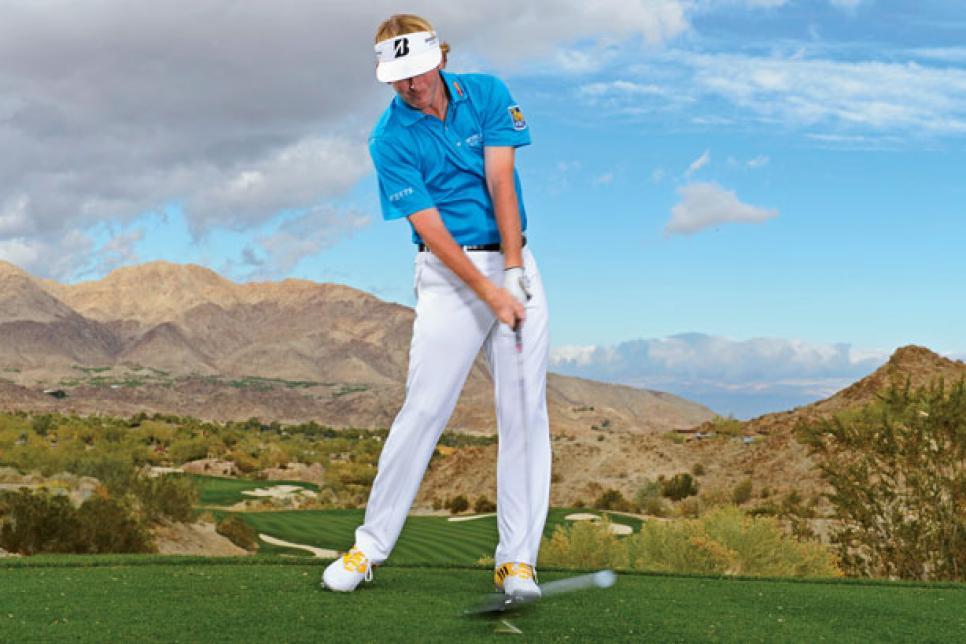
Scoring is a skill, like being a great driver or being automatic out of the sand.
It's about reading situations and picking the best shot, given the risks and where you are with your game. When I don't have my A-game, I try to be real patient. I'd rather be in the middle of the green with a 30-footer I can make than miss in a bad spot and be fighting to avoid bogey. But when I'm on and see an opportunity, I'm trying to run the table. I do have some swing keys—I'll show you a few I've worked on with my teacher, Todd Anderson—but scoring is as much seeing the shot as it is hitting it. Here's how I approach the situations that can turn decent rounds good and good rounds great.
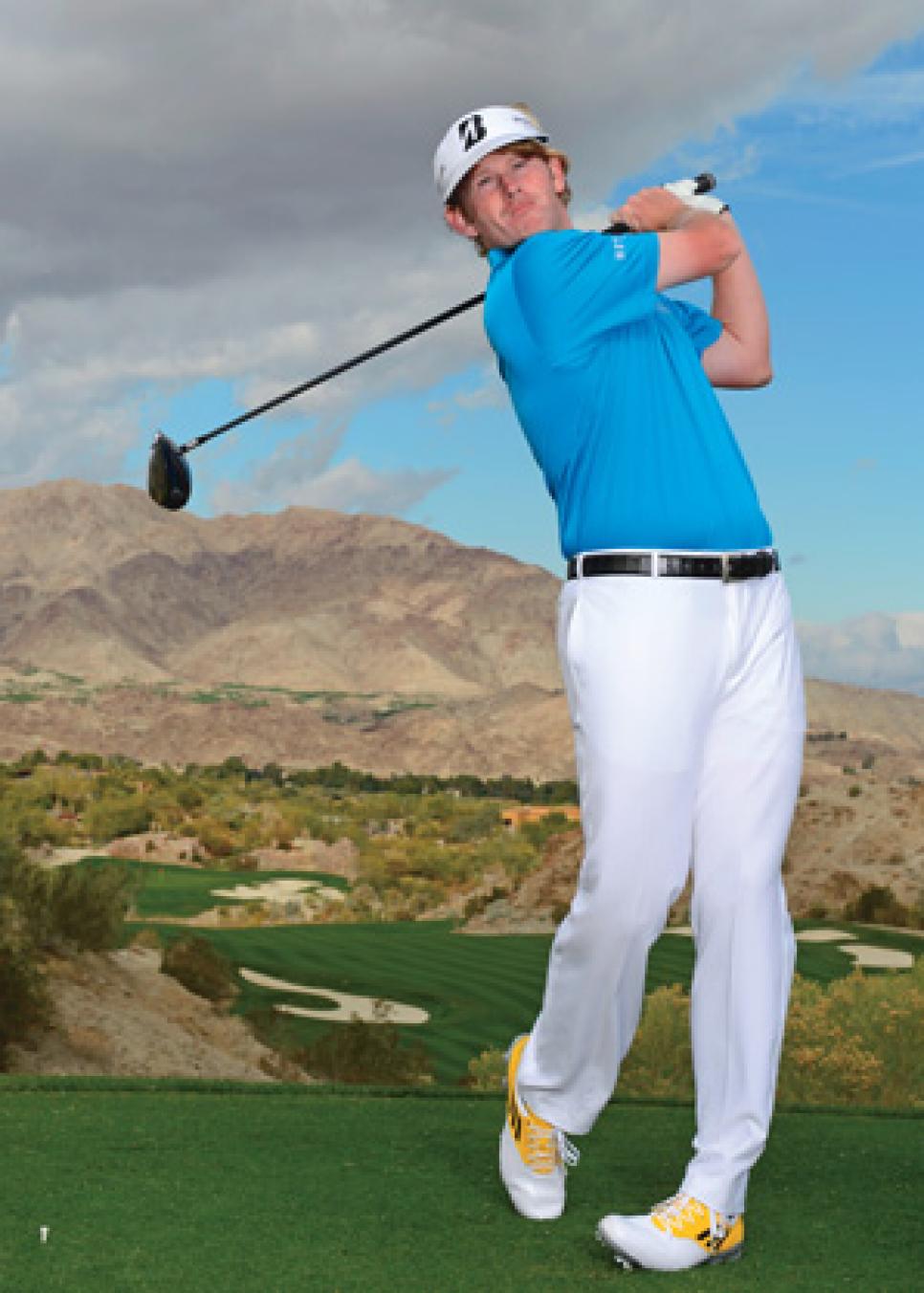
When you really have to hit a fairway, build in some control with your setup but swing freely to a full finish.
Don't Try To Hit The Perfect Shot
The most important tee shots are the ones where you can get into big trouble. Usually it's just two or three a round, but one mistake can put a big number on your card. Remind yourself that you don't have to hit your best drive of the day; you're just trying to get the ball in play.
On these drives, I tee the ball a little lower, so it doesn't stay in the air as long and can't drift way off line. Then I grip down a half-inch and play for my typical shot—a little draw. Once I've done that, I know I've added some control into the shot, so I don't need to do anything different with my swing. I stay aggressive and swing to a full finish (right). Trying to guide the ball away from trouble usually leads to a poor strike.
SNEDISM
The tendency on hard shots is to try to control everything. Relax: Feel your grip pressure at 6 or 7 out of 10, and keep the club in motion at address.
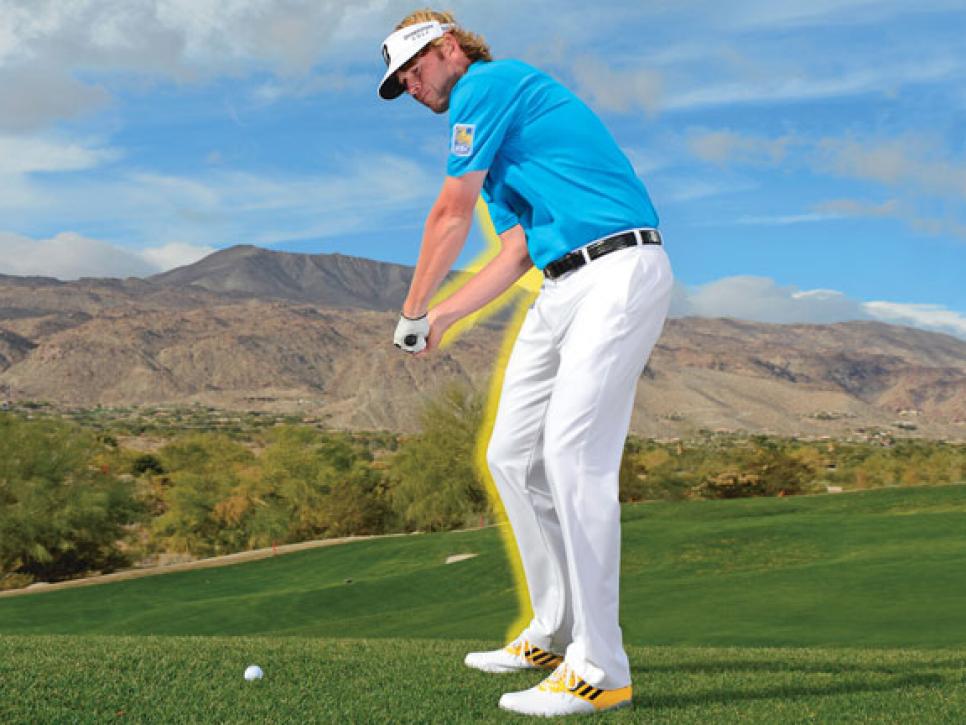
To play a draw, I focus on making a full turn back and then hitting from the inside.
Think Conservative, Swing Aggressive
This is where I have a decision to make: Go for the pin or play to the fat of the green. My draw makes pins on the right tougher to get to, but if the pin is left, I'm on it.
As for technique, a lot of players think about making a good turn with the driver but then swing all-arms with their irons. I often remind myself to make a full turn going back and then hit the inside part of the ball—I want to swing from in to out to hit my draw.
Once I get a good windup, I think of my entire right side as one moving thing, from knee to arm to shoulder (above). Smack it hard with the right side.
SNEDISM
When I'm making birdies, I break my own rule and go for most pins. My thinking is, I've created a little cushion. That helps me stay aggressive.
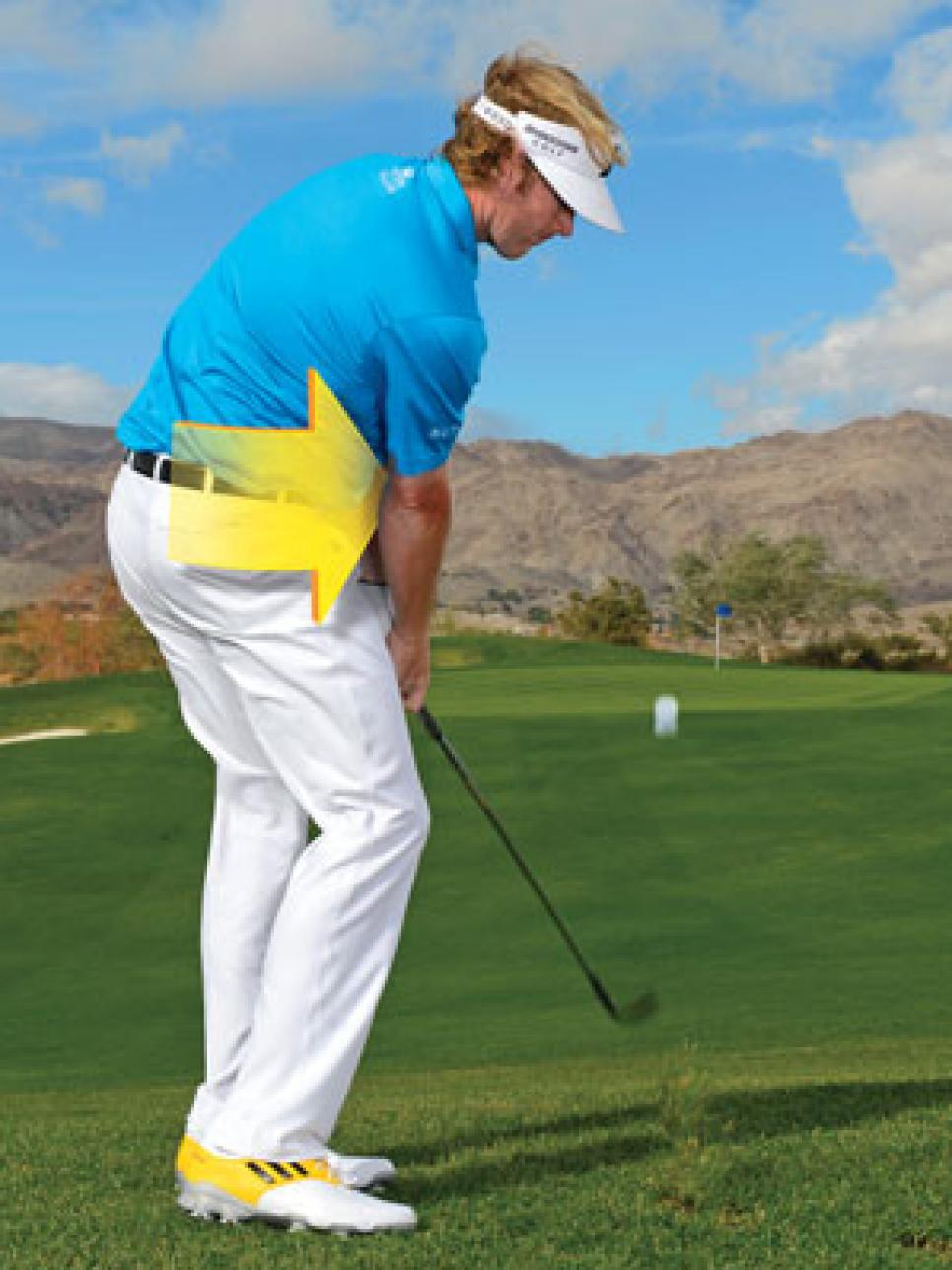
Turn your body through the ball to control contact and distance on wedge.
Swing Back Short, Accelerate Through
On any wedge shot, I expect to get within 10 feet. If the pin is up, I'll fly it in with my 60-degree. If it's back, I'll go lower with my 55.
Amateurs are obsessed with putting spin on these shots, and they think the way to do it is to hit down steeply. But a shallow swing with body turn gives you a better strike and predictable spin. Picture a baseball batter with a big turn through (right). I'll even make practice swings at knee high to get that rotary feel.
The worst thing is to make a big backswing so you have to ease off the shot. Go back shorter, then turn to the target.
SNEDISM Practice hitting wedges to measured targets. Make full and partial swings, and check distances. On the course, you have to know your numbers.
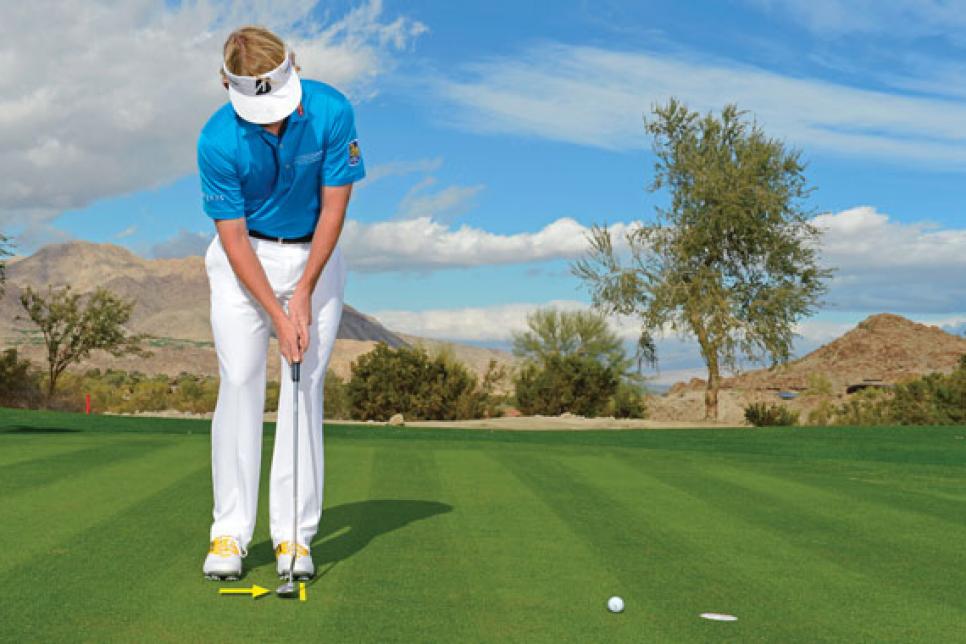
Set the putterface square at address and just pop it in with a short stroke.
Keep The Putterface Looking At The Hole
On short putts, you can think make or miss, so always think make. The target is the smallest you face, so set the putter square at address and don't let it change.
People ask me about my pop stroke on short putts. It's true, my putterhead hits the ball and basically stops (above). Why? Because the impact with the ball absorbs energy. If the putter kept going, it would mean I'm manipulating the motion.
I also use a strong left-hand grip, meaning my hand is turned away from the target on the club. This limits face rotation during the stroke, and less rotation means I'm making putts.
SNEDISM
Practicing five-footers tests your mechanics because you have to be precise. You can check aim and alignment, and if you kept the face square.

I picture a wide track with the ball always working toward the hole off the high side.
Give Them All A Chance To Drop
Putting is where I feel like I have an advantage. I think the reason is, I'm always trying to make these mid-range putts. If you're thinking two-putt, you'll rarely knock one in, because you lose your aggressiveness.
Unless you have major flaws in your stroke, these putts are more about feel than mechanics. When I read a putt, I see a track four or five inches wide that arcs into the hole (right). Depending on speed, I know any ball on that track has a chance. Make sure your putts are always coming in from the high side—and never leave them short.
SNEDISM
When you get too specific with your line, you just add tension. Give yourself some leeway, some room for error. It'll free up your stroke.